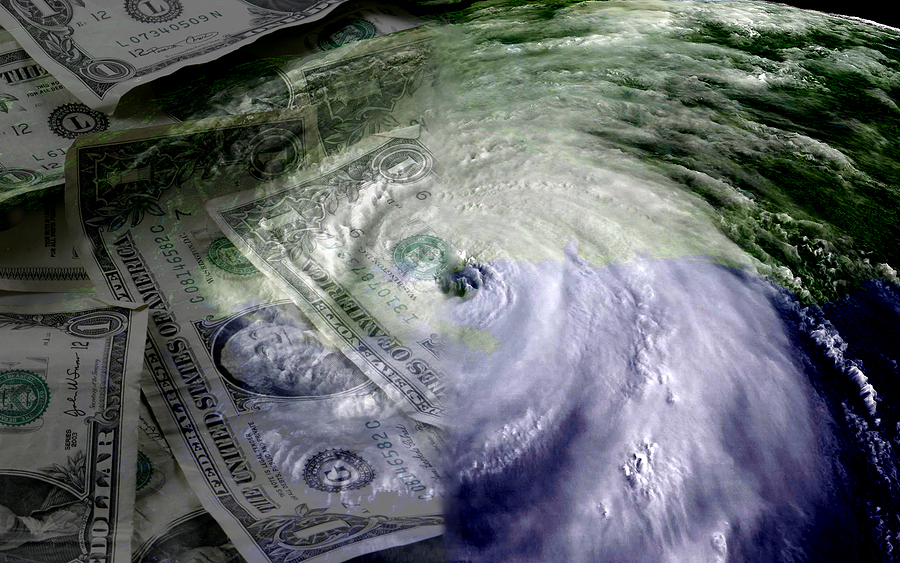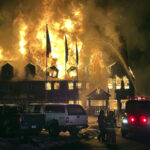Hurricane Irene caused $3 billion to $6 billion in insured losses, catastrophe modeling company AIR Worldwide said Monday, affirming the insurance industry’s suspicion the impact was not as bad as feared.
In the days leading up to Irene, some had expected a $10 billion hit, though as Irene actually made land it appeared the storm was not doing the damage it was expected to do. AIR, whose estimate covers U.S. onshore properties, develops software that insurers use to model exposure to disasters.
Insurance shares rallied sharply on Monday, far outpacing the broader market, on relief the payouts would not be as bad as they could have been.
Even so, some analysts said the storm may have been something of a worst-case scenario for large U.S. property insurers such as Allstate Corp. and Travelers Companies Inc., enough to wipe out some or all of their third-quarter earnings, but not enough to cause an industrywide increase in prices after years of weakness.
Allstate shares rose 8.5 percent and Travelers rose 5.1 percent, in line with European insurers, which rose on relief the damage from Irene was not as bad as feared. Twenty of the 22 companies in the S&P insurance index outperformed the broader market.
Millions of people throughout the northeastern United States were still flooded and without electricity Monday, particularly in rural Vermont and suburban New Jersey. Totaling those losses is expected to take time, as is the process of figuring out how many of the affected had government-backed flood insurance.
By some accounts, the insured losses in the Carolinas were as little as $200 million after the storm made landfall there Saturday.
$10 BILLION EVENT?
Before the hurricane, some feared Irene could be a $10 billion event or more. Analysts and insurance executives suggested something above $15 billion could bring a structural change to the insurance market, pushing prices higher around the world after three years of weakness.
It seemed unlikely Irene would hit that mark, with trade groups such as the Insurance Information Institute and the Property and Casualty Insurers of America saying estimates below $5 billion sounded right.
“The impact to insurers from Irene is probably not large enough to cause increased pricing and will not result in a broad (property and casualty) cycle turn because we estimate there is still least $100 billion of excess U.S. P&C industry capital,” Barclays Capital said in a note Monday.
Between the Caribbean and the Carolinas, AIR competitor Eqecat has estimated losses of no more than $1 billion. AIR Worldwide has previously forecast losses of $1.1 billion just for the Caribbean. The third key player in catastrophe modeling for the insurance industry, RMS, has not weighed in with a figure.
On Monday, RMS did say the damage so far is much more likely to be from flood and storm surge than wind, which would get the insurance industry off the hook for most of the losses and push the payout burden onto the National Flood Insurance Program.
The shares of the world’s top three reinsurers — Munich Re , Swiss Re and Hannover Re — rose 4 to 6 percent as analysts said they did not expect that any losses would force a change to 2011 estimates.
This year already was the most expensive for natural disasters, mostly because of the costs of the March earthquake in Japan.
(Additional reporting by Jonathan Gould in Frankfurt; editing by Derek Caney, Robert MacMillan, Andre Grenon and Phil Berlowitz)
Topics USA Profit Loss Flood Property Casualty Market
Was this article valuable?
Here are more articles you may enjoy.



 Chubb, The Hartford, Liberty and Travelers Team Up on Surety Tech Launch
Chubb, The Hartford, Liberty and Travelers Team Up on Surety Tech Launch  Florida Jury Returns $779M Verdict for Family of Security Guard Killed at Gambling Cafe
Florida Jury Returns $779M Verdict for Family of Security Guard Killed at Gambling Cafe  Trump to Issue Order Creating National AI Rule
Trump to Issue Order Creating National AI Rule  Owner of Historic Minnesota Resort Charged With Arson, Insurance Fraud
Owner of Historic Minnesota Resort Charged With Arson, Insurance Fraud 

